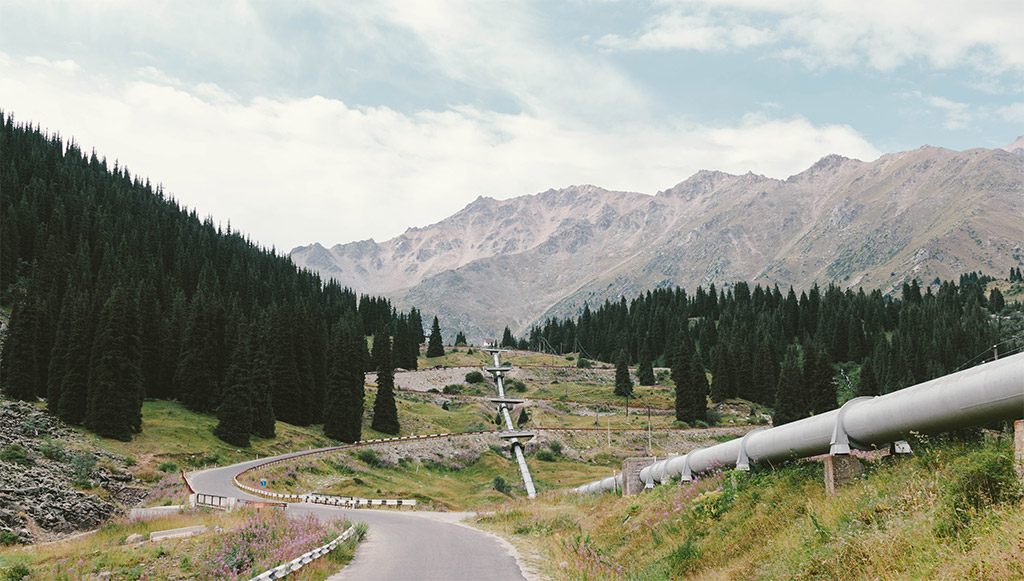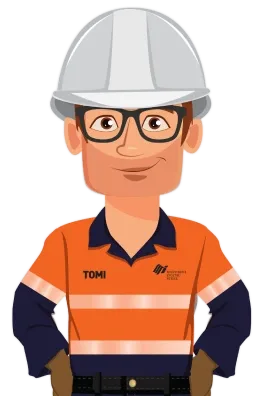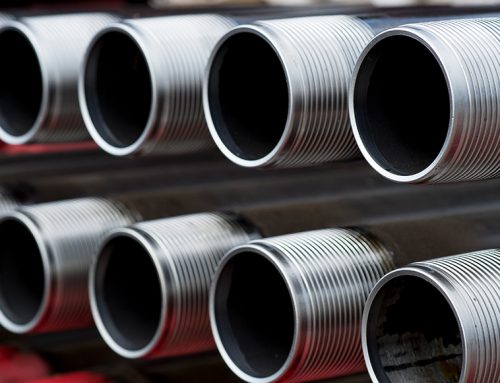
The role played by linepipe in supporting the international distribution of energy cannot be understated. The reliability, durability and performance of these essential pieces of infrastructure is only made possible by the precise science of metallurgy. By applying their knowledge of metals and alloys to the context of linepipe manufacturing, expert metallurgists are able to select the right input materials to create finished linepipe products suitable for a wide range of oil and gas applications.
In this blog, we will explore the utility of carbon steel linepipe, the manufacturing process, and the impact of using high-quality alloys.
Introduction to Carbon Steel for Linepipe
The carbon steel used to construct linepipe is, like all steels, an alloy of iron and carbon. It is predominantly used in the Oil and Gas industry to transport oil and gas products from production sites to processing facilities, refineries, and ultimately distribution centres. The suitability of carbon steel for this very specialised application is evidenced by its highly desirable attributes:
- Strong and durable
- Cost-effective to produce
- Corrosion resistant
- Easily welded
- Widely available in various grades and specifications
- Recyclable
Metallurgy: Manufacturing Steel for Linepipe
1. The Ironmaking Process
To produce iron, raw materials such as powder iron ore, lime and coal are sintered by a sintering machine, which uses heat to compact and form a solid mass of material but stops short of liquefaction.
These sintered materials are inserted from the top of the blast furnace, forming layers of sintered ore and coke. Hot air and oxygen are then blown in from the bottom of the blast furnace, which melts and reduces the sintered ore. The reaction in the blast furnace produces carbon monoxide and the reduction of iron oxide.
2. The Steelmaking Process
The melted iron from the blast furnace is de-phosphorised, desulphurised and de-siliconised using the hot metal pretreatment equipment. It is then decarbonised through oxygen blowing and the addition of microalloying elements such as copper, nickel and molybdenum, all of which is conducted in a basic oxygen furnace.
In the case of higher strength or sour-resistant linepipe, further de-sulfurisation and de-phosphorisation activities are undertaken in the ladle furnace. This additional process entails higher production costs and restricts the amount of higher-grade steel that can be produced each month.
The final step is vacuum de-gassing, which utilises hydrogen, nitrogen and oxygen to remove dissolved gas from the molten steel. During this process, niobium, vanadium, titanium and chromium may also be added to improve the quality of the steel and ensure it displays the desired properties.
Interested in learning more about metallurgy? Read our 101 guide to OCTG manufacturing here.
The Importance of Using High-Quality Alloys
To ensure that the strength, durability and mechanical properties of carbon steel are sufficient for any given application, it is essential to use high-quality alloys.
For example, carbon steel used to construct sour service linepipe, which transports particularly corrosive materials, can be optimised through the addition of corrosion-resistant alloying elements (like chromium and nickel) to maximise the steel’s resistance to chemical reactions, moisture, and other corrosive elements. This contributes to a safer working environment while also reducing maintenance costs and increasing the useful life of the linepipe.
Further, there is a positive relationship between the weldability of carbon steel linepipe and the amount of high-quality alloying elements used during its production. This means that these alloys directly contribute to the creation of carbon steel that can be more readily joined and shaped, making construction and repair easier and safer. It also means that the steel is better able to perform at elevated temperatures without compromising its strength or reliability, further contributing to a safer working environment.
This all serves to create a linepipe product that is extremely reliable and heavily resistant to wear and abrasions, granting it a high degree of longevity, which in turn makes it extremely cost-effective in the long run.
Visit Pipesales global marketplace to enquire about your next linepipe project, or if you have surplus inventory, create a sales listing for your stock.





